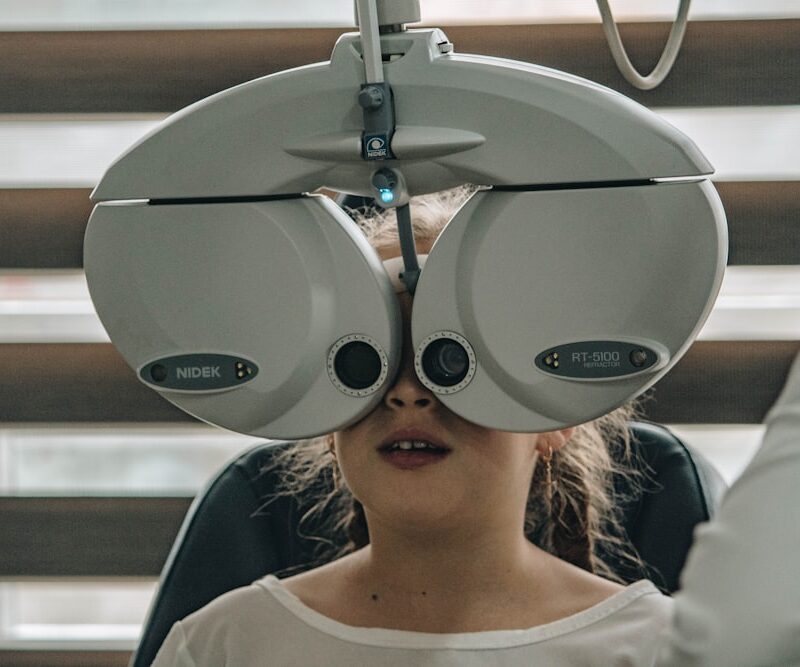If you wear glasses or contact lenses, you’ve likely heard about LASIK as a potential solution to correct your vision. But what exactly is LASIK?
Understanding LASIK
LASIK, which stands for “Laser-Assisted In Situ Keratomileusis,” is a surgical procedure designed to correct vision problems, such as nearsightedness (myopia), farsightedness (hyperopia), and astigmatism. By reshaping the cornea – the clear front part of the eye – LASIK aims to improve the way light is focused onto the retina, resulting in clearer vision without the need for glasses or contact lenses.
How LASIK Works
Corneal Reshaping – During LASIK surgery, a specialized laser is used to precisely reshape the cornea. By creating a thin flap on the cornea’s surface, the surgeon can access the underlying tissue and reshape it according to the patient’s prescription.
Customized Treatment – LASIK procedures are tailored to each individual’s unique vision needs. Advanced technologies, such as wavefront mapping and topography-guided LASIK, allow for highly customized treatments that address even complex vision issues.
Candidacy for LASIK
LASIK isn’t suitable for everyone. Certain factors, such as age, eye health, and medical history, determine whether you’re a good candidate for the procedure. Here are some considerations:
- Age: While there’s no strict age limit for LASIK, most surgeons prefer operating on individuals over 18 years old, when their eyes have fully matured.
- Stable Prescription – Candidates should have a stable vision prescription for at least a year before undergoing LASIK.
- Overall Eye Health – Good eye health is crucial for candidacy for the best LASIK in Tennessee and beyond. Conditions such as glaucoma, cataracts, and severe dry eye may disqualify someone from the procedure.
- Realistic Expectations – It’s essential for candidates to have realistic expectations about the outcomes of LASIK surgery. While it can significantly reduce dependence on glasses or contacts, perfect vision isn’t guaranteed.
The LASIK Procedure
Preoperative Evaluation
Before undergoing LASIK, you’ll undergo a thorough eye examination to assess your candidacy for the procedure. This evaluation includes:
- Measurement of Prescription – Your surgeon will determine the precise nature of your vision prescription.
- Corneal Mapping – Using advanced imaging techniques, the shape and thickness of your cornea will be evaluated.
- Health Assessment – Any underlying eye conditions or general health issues that may affect the surgery will be identified.
Surgery Day
On the day of surgery, you’ll be awake but may receive a mild sedative to help you relax. Here’s what to expect during the LASIK procedure:
Flap Creation – The surgeon will create a thin flap on the surface of your cornea using a microkeratome or a femtosecond laser.
Corneal Reshaping – The excimer laser will be used to reshape the underlying corneal tissue based on your prescription.
Flap Repositioning – Once the cornea has been reshaped, the flap is carefully repositioned, where it adheres naturally without the need for stitches.
Postoperative Care
After LASIK surgery, you’ll be provided with instructions for postoperative care, which may include:
- Use of Eye Drops – Prescription eye drops will help prevent infection and promote healing.
- Rest and Recovery – It’s essential to give your eyes time to heal. Avoid strenuous activities and eye strain in the days following surgery.
- Follow-Up Appointments – Regular follow-up appointments with your surgeon will allow them to monitor your progress and address any concerns.
Risks and Complications
While LASIK is generally considered safe and effective, like any surgical procedure, it carries some risks and potential complications. These may include:
- Dry Eyes – Many patients experience temporary dryness and discomfort following LASIK surgery, which can be managed with lubricating eye drops.
- Undercorrection or Overcorrection – In some cases, the desired level of vision correction may not be achieved, requiring additional procedures or continued use of glasses or contacts.
- Halos and Glare – Some patients may experience visual disturbances such as halos, glare, or difficulty driving at night, particularly in the immediate postoperative period.
- Corneal Flap Complications – Although rare, issues with the corneal flap, such as dislodgement or wrinkling, may occur and require surgical intervention.
Frequently Asked Questions (FAQs)
Is LASIK painful?
LASIK surgery is typically not painful. Before the procedure, numbing eye drops are used to ensure you remain comfortable throughout. Some patients may experience mild discomfort or a sensation of pressure during the surgery, but it’s generally well-tolerated.
How long does LASIK surgery take?
The actual LASIK procedure typically takes only about 10 to 15 minutes per eye. However, you should plan to spend a few hours at the surgical center for preoperative preparation and postoperative observation.
How soon can I return to work or normal activities after LASIK?
Many patients are able to resume normal activities, including work, the day after LASIK surgery. However, it’s essential to follow your surgeon’s postoperative instructions carefully and avoid activities that may strain or irritate your eyes during the initial healing period.
Will I still need glasses or contact lenses after LASIK?
While LASIK can significantly reduce dependence on glasses or contact lenses, some patients may still require them for certain tasks or activities, particularly as they age. However, the degree of dependence on corrective eyewear is typically much less after LASIK.
How long does it take to see results after LASIK?
Most patients notice a significant improvement in their vision within a day or two after LASIK surgery. However, it may take several weeks for your vision to stabilize fully as your eyes continue to heal.
Are there any long-term side effects of LASIK?
LASIK is considered a safe and effective procedure with minimal long-term side effects. However, some patients may experience dry eye symptoms or other visual disturbances, which are usually temporary and resolve with time. It’s essential to attend all follow-up appointments with your surgeon to monitor your eye health and address any concerns.
Conclusion
LASIK surgery offers many individuals the opportunity to achieve clearer vision and greater freedom from glasses or contact lenses. By understanding the procedure, candidacy criteria, and potential risks, you can make an informed decision about whether LASIK is the right choice for you.







